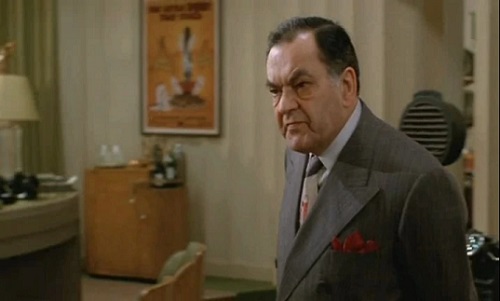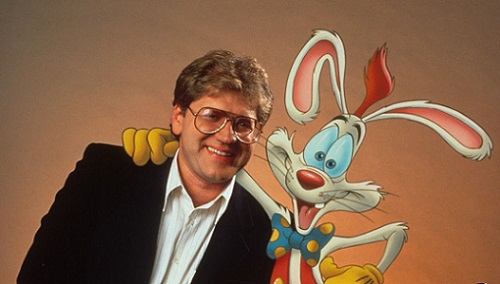Scottish dramatist and novelist J.M. Barrie wrote the 1904 play Peter Pan: The Boy Who Wouldn’t Grow Up. That play would be turned into the Walt Disney Productions movie Peter Pan (1953), a feature presented through animation with a girl and her two younger brothers experiencing an adventure with the hero of their stories. Peter Pan, distributed by RKO Radio Pictures, Inc., was the final Disney film distributed before Disney created its own distribution company, Buena Vista Pictures Distribution, Inc.; Buena Vista later was renamed following Disney’s 2007 acquisition by American Broadcasting Company (ABC).

The movie opens in the first decade of the twentieth century to a home in London, England, with brothers John and Michael Darling acting out stories of adventure and daring conveyed to them by their older sister, Wendy. That this play interferes with the preparations for dinner underway by parents George and Mary Darling leads George to threaten Wendy with moving from the room with her brothers to a room of her own, thus ending the stories shared amongst siblings. Wendy, John, Michael, George and Mary were voiced by Kathryn Beaumont, Paul Collins, Tommy Luske, Hans Conried and Heather Angel, respectively. Conried also voiced the character Captain Hook.

Peter Pan the character arrives at the Darling home later that evening, with the character Tinker Bell after the parents have left for dinner. Peter, primarily by the negotiated persuasion with Wendy, convinces Wendy, John and Michael to join Peter and Tinker Bell for an evening of childhood adventure in Neverland. Neverland is a place where children aim to remain children, never growing up. The interplay between Peter and Wendy, and then Peter and Tinker Bell, provide interesting plot points in the notion of what remaining children and never entering into adulthood, means. Tinker Bell’s character, portrayed with a distinctive personality as a pixie, is not voiced in Peter Pan, whereas Peter is voiced by Bobby Driscoll.

Once to Neverland, a series of adventures ensues in furtherance of the triangle between Peter, Wendy and Tinker Bell. The adventures begin with an introduction to the Lost Boys of Neverland, Captain Hook and his First Mate Mr. Smee, John and Michael are introduced to the island’s indigenous population when captured with others by the cleverness of the indigenous people. The chief of the group initially suspects John and Michael of having taken the chief’s daughter, Tiger Lily, captive. Peter and Wendy work to correct this misconception after encountering mermaids jealous of Peter’s suspected attention from Wendy. A celebration initiated by the indigenous people after Tiger Lily is returned to her home unharmed aligns to what some consider stereotypical. Mr. Smee, Captain Hook’s first was voiced by Bill Thompson. Candy Candido voiced the Indian Chief. The mermaids were voiced by June Foray, Connie Hilton, Karen Kester, Margaret Kerry and Lucille Bliss. Thompson also voiced several pirates aboard Captain Hook’s boat while Foray voiced the Squaw Woman during the Tiger Lily celebration. Tiger Lily did not speak during Peter Pan, save a voice request for help that was not credited to any specific actress.

Additional characters without speaking parts in the movie included a dog named Nana, who nursed the Darling children when not in Neverland, and a crocodile central to the scene that eventually leads to the Darling children getting back home to their London home. The fate of the pirate ship, the larger adventures, and in some sense the Lost Boys of Neverland, are determined in these closing moments. The message that brings the movie to a close, regarding the freedom to maintain the innocence and imagination of childhood for as long as you can, lands particularly well with this reviewer.

Writing credit for the movie Peter Pan, beyond the inspiration of J.M. Barrie, rests with Ted Sears, Erdman Penner, Bill Peet, Winston Hibler, Joe Rinaldi, Milt Banta, Ralph Wright, William Cottrell and Don Christensen. I grant the movie Peter Pan as directed by Clyde Geronimi, Wilfred Jackson, Hamilton Luske and Jack Kinney 4-stars on a scale of one-to-five.
Matt – Saturday, May 18, 2024



































 (Daniel H. Pink wrote To Sell Is Human: The Surprising Truth About Moving Others).
(Daniel H. Pink wrote To Sell Is Human: The Surprising Truth About Moving Others). (Daniel H. Pink also wrote When: The Scientific Secrets of Perfect Timing, as reviewed by
(Daniel H. Pink also wrote When: The Scientific Secrets of Perfect Timing, as reviewed by  (Daniel H. Pink wrote To Sell Is Human: The Surprising Truth About Moving Others).
(Daniel H. Pink wrote To Sell Is Human: The Surprising Truth About Moving Others).
 (Bob Hoskins as Eddie Valiant with the animated Roger Rabbit in the film Who Framed Roger Rabbit).
(Bob Hoskins as Eddie Valiant with the animated Roger Rabbit in the film Who Framed Roger Rabbit). (
( (
( (
( (Christopher Lloyd as Judge Doom in the film Who Framed Roger Rabbit).
(Christopher Lloyd as Judge Doom in the film Who Framed Roger Rabbit). (Robert Zemeckis, pictured here with an animated version of Roger Rabbit, directed the film Who Framed Roger Rabbit).
(Robert Zemeckis, pictured here with an animated version of Roger Rabbit, directed the film Who Framed Roger Rabbit).
 (The movie A Star Is Born was first made in 1937 with remakes in 1954, 1976, and 2018).
(The movie A Star Is Born was first made in 1937 with remakes in 1954, 1976, and 2018). (1939’s movie The Wizard of Oz was remade as The Wiz in 1978).
(1939’s movie The Wizard of Oz was remade as The Wiz in 1978). (1982’s musical movie Annie was remade in 1999 and 2014. All take inspiration from Little Orphan Annie of 1932).
(1982’s musical movie Annie was remade in 1999 and 2014. All take inspiration from Little Orphan Annie of 1932). (1972’s The Godfather experienced sequels in 1974 and 1990).
(1972’s The Godfather experienced sequels in 1974 and 1990). (2005’s Batman Begins was followed by The Dark Knight and The Dark Knight Rises in 2008 and 2012, respectively).
(2005’s Batman Begins was followed by The Dark Knight and The Dark Knight Rises in 2008 and 2012, respectively). (The 1975 blockbuster movie Jaws was followed by sequels in 1978, 1983, and 1987).
(The 1975 blockbuster movie Jaws was followed by sequels in 1978, 1983, and 1987).